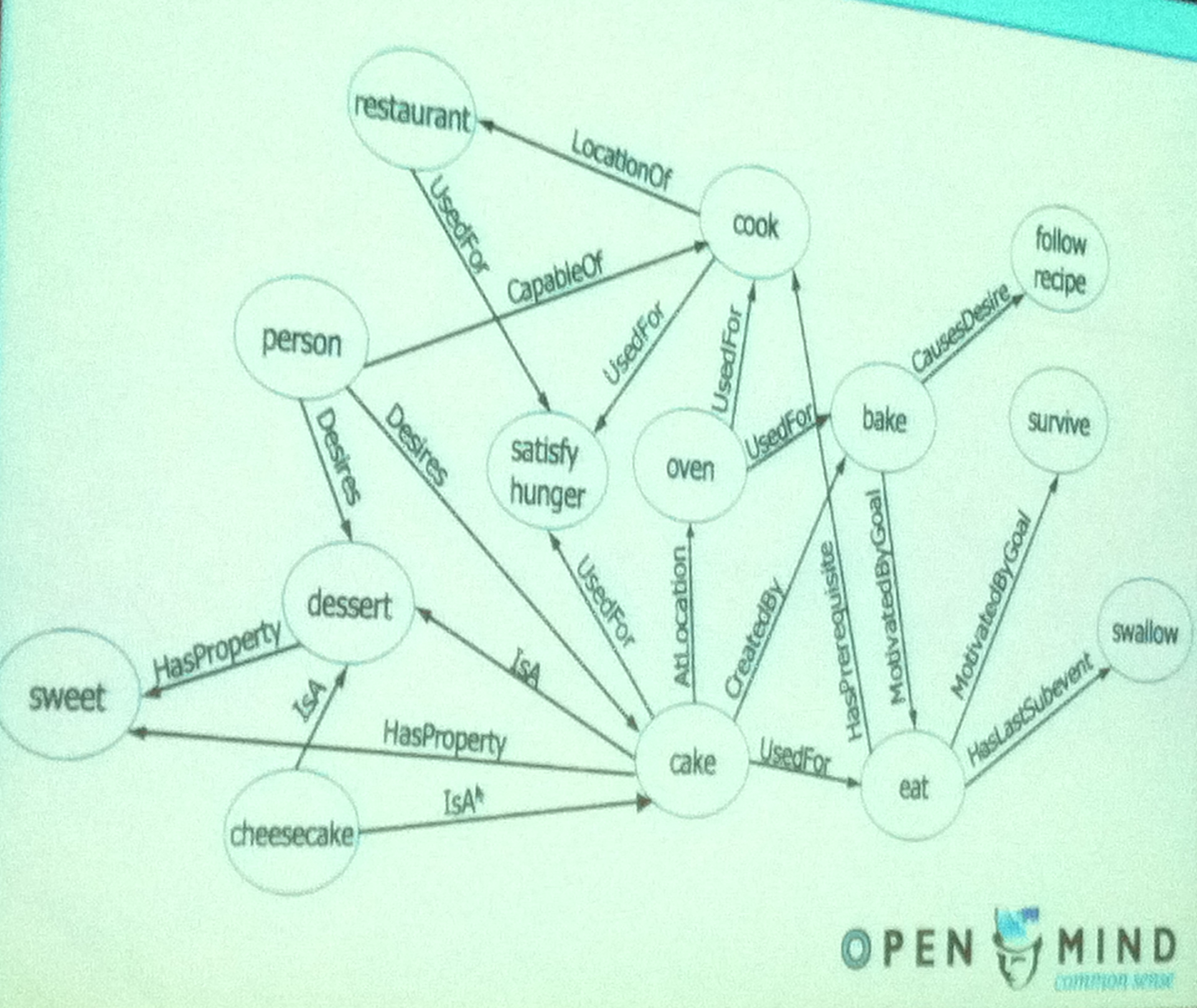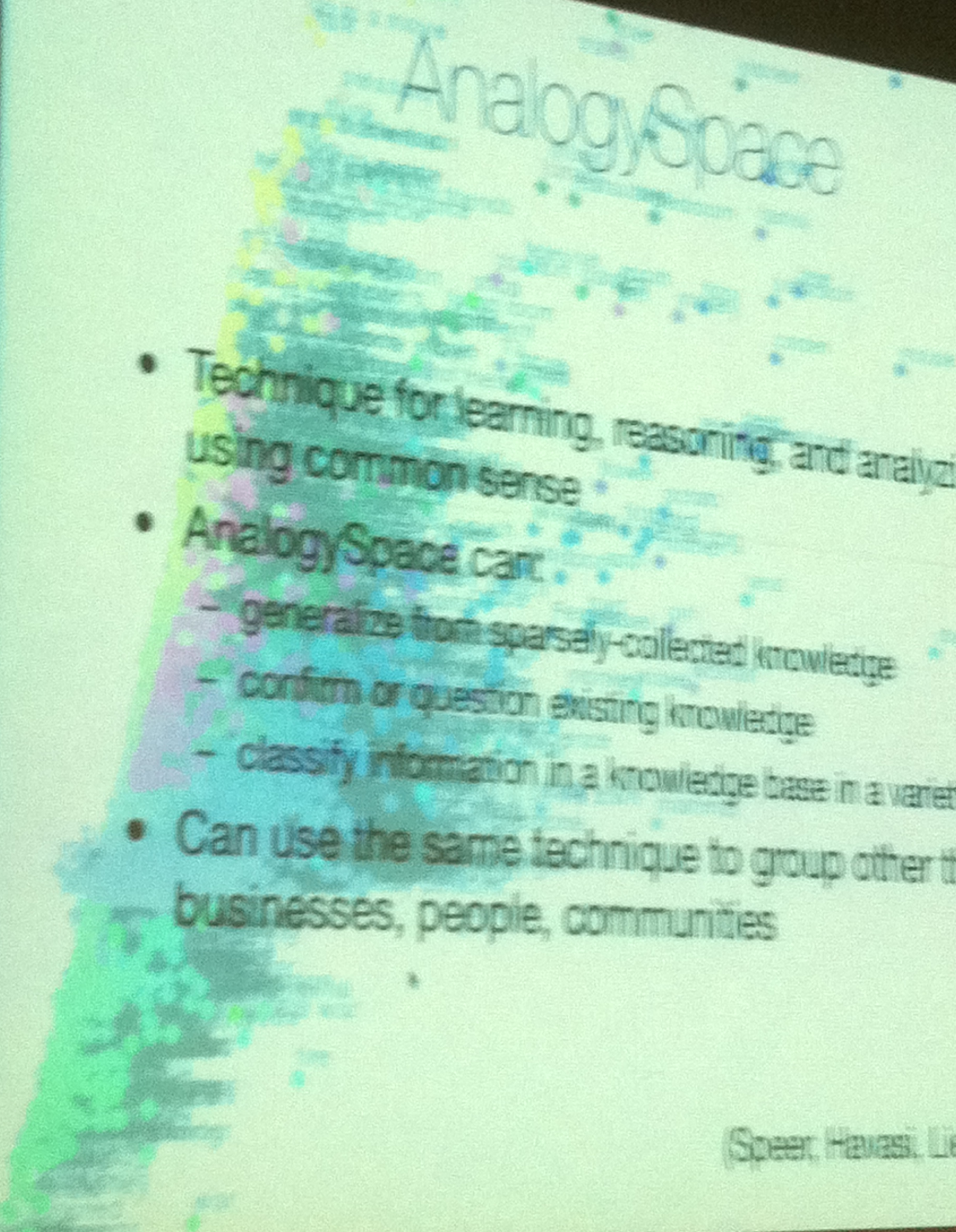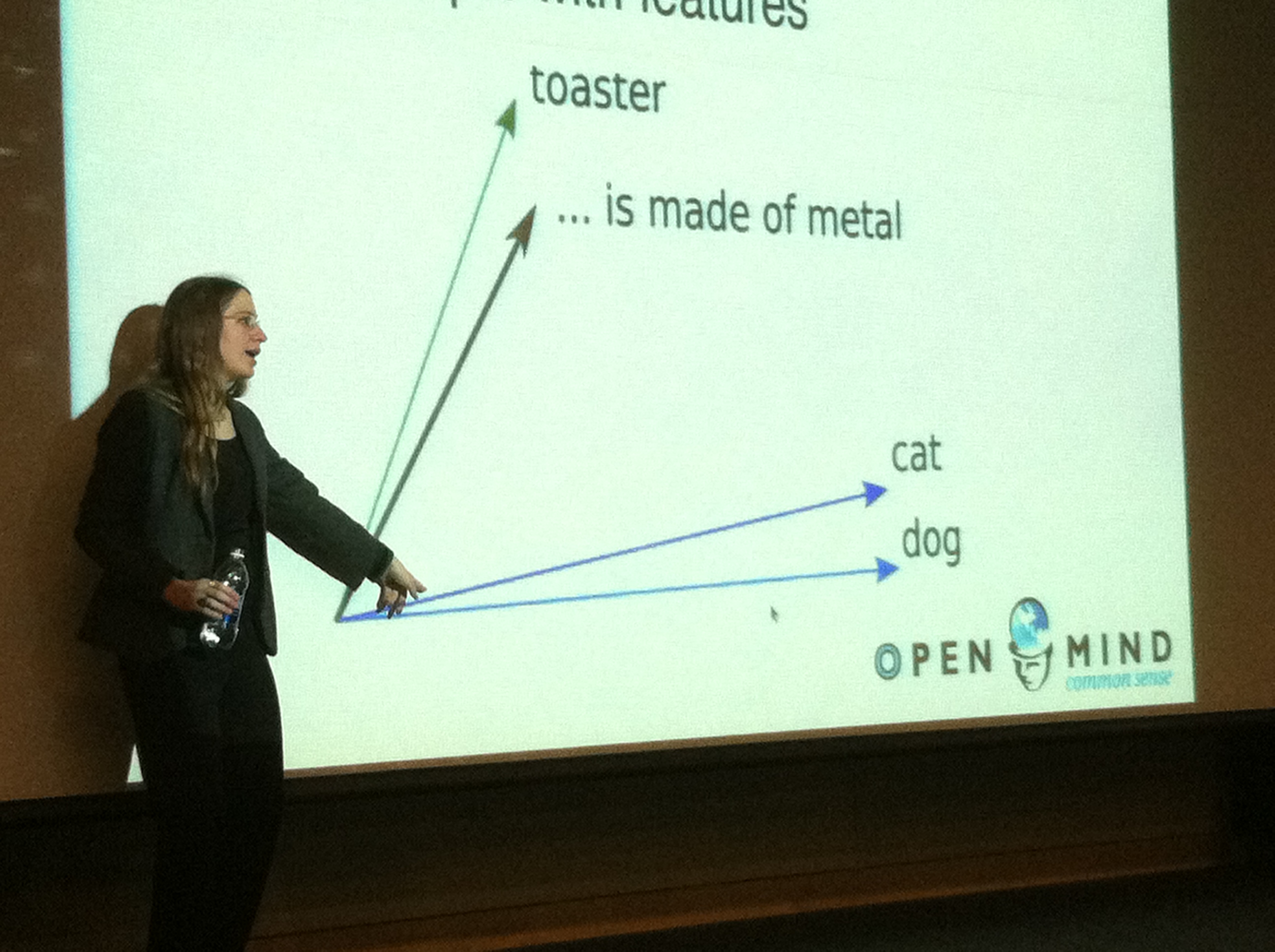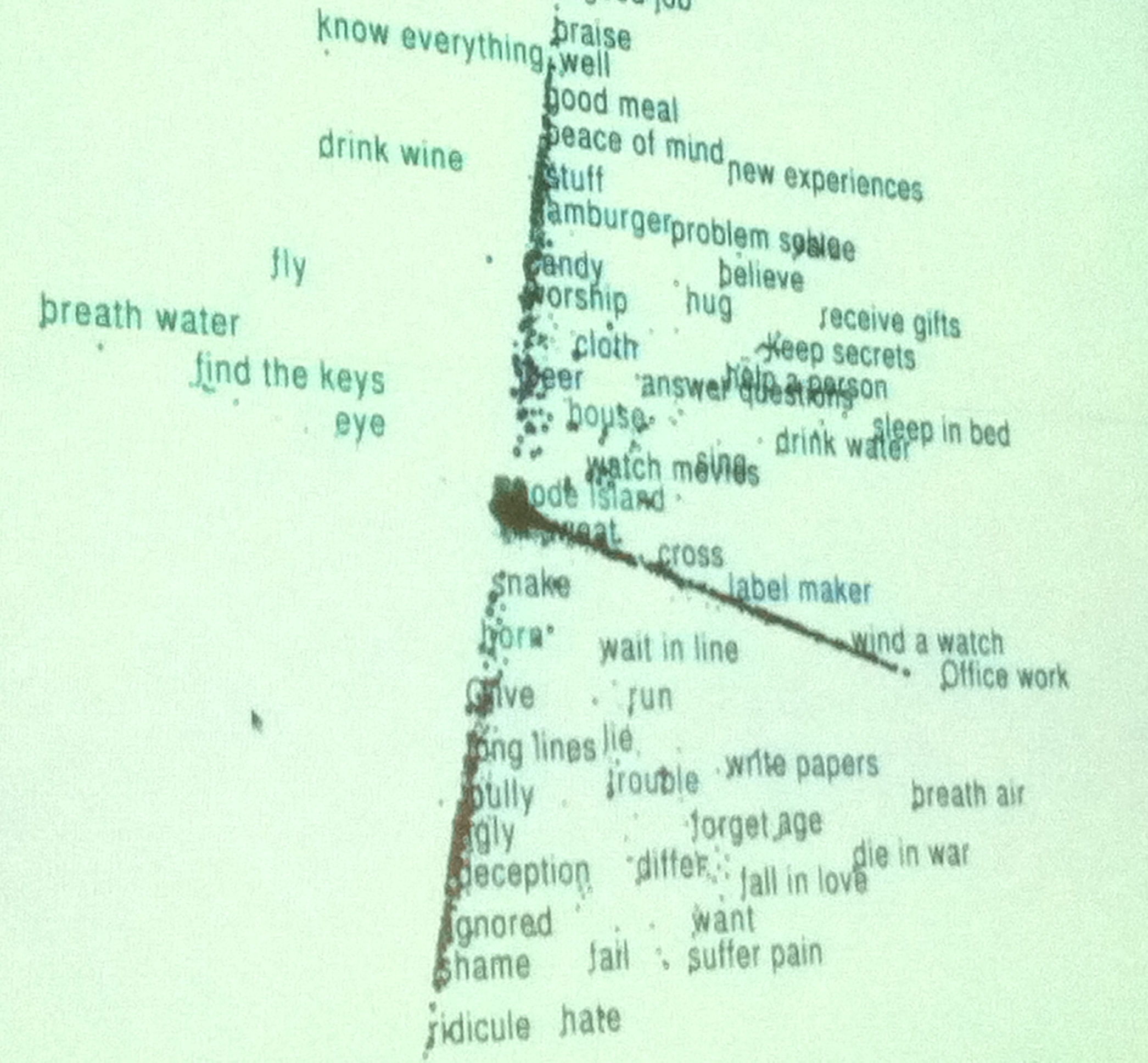 |
| ConceptNet Map describing relationships between concepts |
As my faithful readers will know, I have recently become very interested in data processing. This season's ATLAS lecture series has been excellent so far, and I couldn't pass this one up. Catherine Havasi conducts research at the MIT Media Lab in the field of Natural Language Processing or NLP. This is the field that is defining the way we use computers to analyze data, specifically in the linguistic realm. For the past 12 years, she has been working on a research project, Open Mind Common Sense, which shifts the focus towards Natural Language Understanding. Using assumptions about how things work and the connections between objects and concepts, conclusions can be made about very large data sets. She presents these conclusions in a three dimensional vector space known as AnalogySpace (built in Processing) and a database known as ConceptNet.
 |
| AnalogySpace |
The other theme I have been noticing more and more of is the use of video games to conduct research. Ian Bogost's lecture on Art and the Constraints of Programming utilized video game platforms to examine their limitations and place within art and society. Catherine uses video games themselves to collect data and have it analyzed by real human beings. The project does this in half a dozen languages and processes in about 150 different dimensions.
 |
| Cat vs. Dog vs. Airplane |
The best example she gave is presented here. Along the y-axis is Good vs. Bad, along the x-axis is the feasibility of each action occurring. Examine the picture for a while, and you will see some amusing relationships, as well as begin to understand how AnalogySpace works. For example, "know everything" or "die in war". The goal of all this research is to build a system, based on human input, to make sense of everyday life.
 |
| Good/Bad (y-axis) vs. Impossible/Possible (x-axis) |
"The goal is to find the signal in the noise."